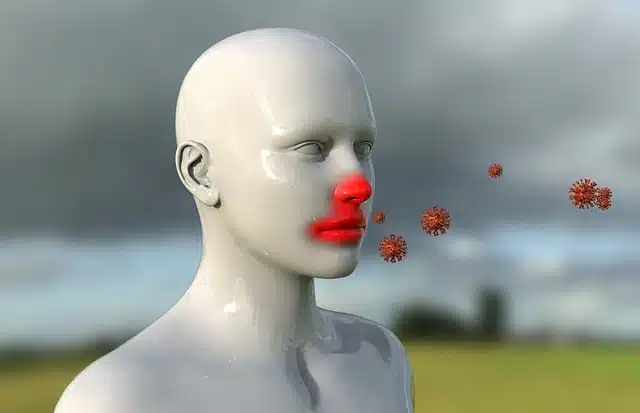
Contagion involves the transmission of a disease through direct or indirect contact.
From the Latin contagium , contagion is the transmission of a disease by mediate or immediate contact. A contagious disease , therefore, is one that a sick person can transmit to a healthy person.
For example: "I think the contagion occurred at school since, these days, there are several children with chickenpox" , "If you want to avoid contagion, you would have to wear a mask when entering the room" , "The use of condom (or condom) is essential to minimize the risk of contracting HIV .
Disease contagion
The spread of a disease, therefore, occurs when a healthy individual comes into direct or indirect contact with another who suffers from a certain infectious disease. Among contagious diseases, those known as exanthematic diseases can be named, characterized by a skin rash.
Chickenpox , measles , rubella , and scarlet fever are some of the most well-known contagious diseases. It frequently affects children and the contagion occurs in the most common meeting places, such as school, a club or a square. When a child contracts this disease, they can spread it to everyone around them. That is why it is necessary that, once the contagious disease is detected, the patient secludes himself or takes certain precautions to avoid spreading the infection .

Vaccines help reduce the chances of contracting certain diseases.
chickenpox
Chickenpox is a viral infection that produces a series of very itchy blisters on all parts of the human body. In the past, it was one of the common childhood diseases, but since a vaccine was found to combat it, its occurrence has decreased considerably.
The name of the virus that causes it is varicella zoster and it belongs to the herpesvirus family . One of the most worrying characteristics of chickenpox is its risk of contagion, since it is very high. Just being close to an infected person while they sneeze is enough to become infected, and the same thing happens when you are exposed to the liquid contained in one of the blisters.
But that's not all; The person sick with chickenpox does not need to be in an advanced stage for contagion to occur. In fact, chickenpox is contagious almost two days before the blisters appear and remains so until all of the blisters have dried.
Most cases of chickenpox occur in children under 10 years of age and are usually mild, although there can be serious complications, especially in adolescents and adults.
The contagion of rubella
Rubella is an infection that causes a skin rash and is also known as German measles . It is called congenital rubella when a pregnant woman transmits it to her baby.
The cause of this disease is a virus that spreads through close contact or through the air. Rubella infection can occur from one week before the rash appears to two weeks after it disappears. Similar to what happens with chickenpox, thanks to the widespread use of its vaccine, which also combats measles and mumps, rubella is not as common today as it was a few decades ago.
Even for those who have received the vaccine in childhood, to avoid contagion in adulthood, especially in case of pregnancy, there is a highly recommended booster.
Other uses of the notion
In a symbolic sense, all types of transmission that develop through influences of various kinds are known as contagion.
It is possible to spread habits , customs, tendencies, attitudes, etc.: «The contagion effect of the European crisis will reach America sooner or later» , «The singer managed to spread his enthusiasm to the audience present in the room» .
